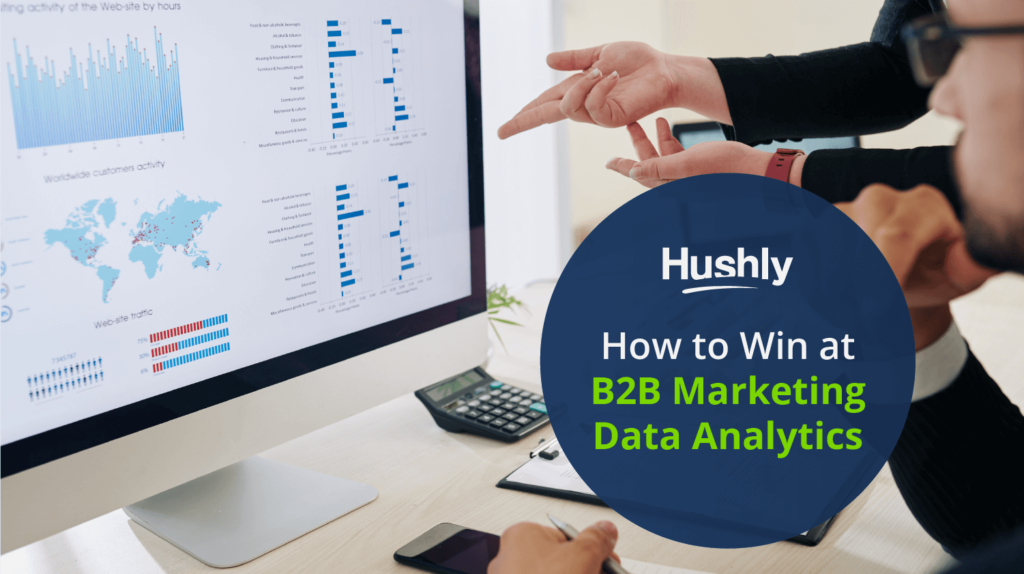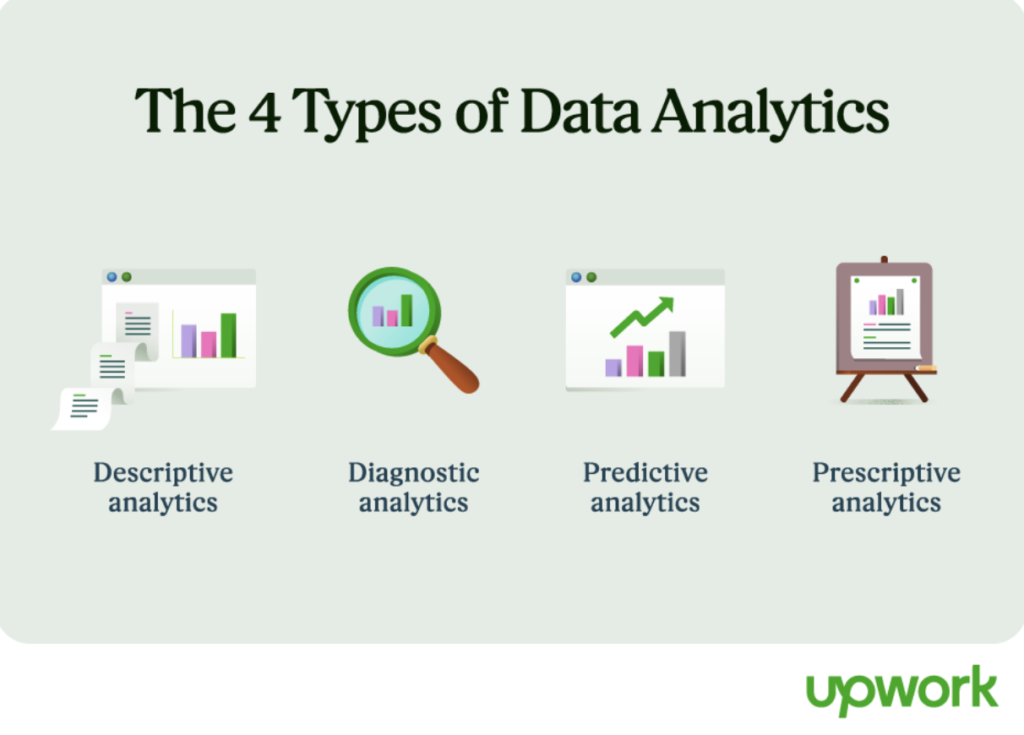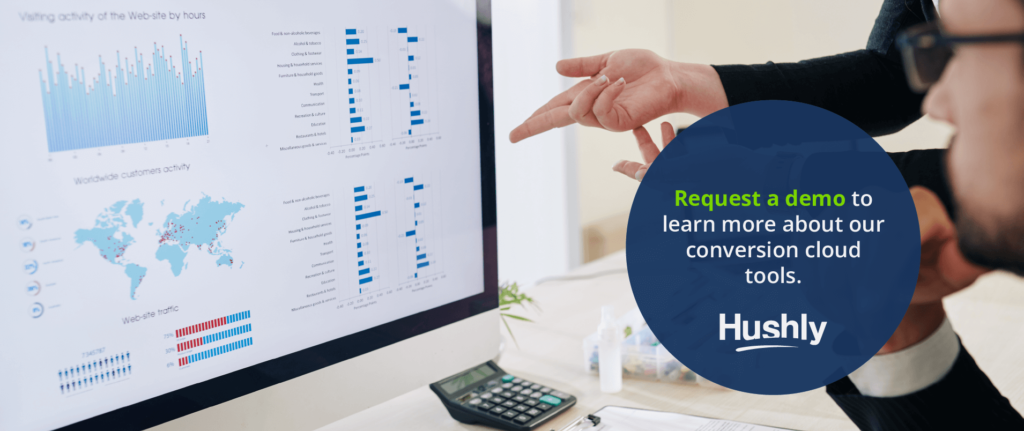Marketing would be a breeze if more marketing leaders were like Professor X from X-Men. He could telepathically read other people’s minds, often using machines to enhance his ability. While you won’t ever have telepathic superpowers, you do have machines that can aid in reading people’s minds.
Artificial intelligence (AI), while not quite the same as sci-fi films portray, can gather deep insights into customer feelings based on behaviors and information. You collect, process, and identify patterns about people in a fascinating process called data analytics.
B2B marketing data analytics is only a powerful tool if you understand how to use it in your strategies effectively.
Use this complete B2B marketing data analytics guide to learn how to collect, store, audit, and analyze B2B marketing data.

How to Collect Relevant Data
B2B marketing data analytics begins with collecting the right data. Having databases packed with information is only relevant if you can use that data to improve your B2B marketing strategies.
Identifying Relevant Data
Begin your data collection by identifying your goals. Ask yourself what you hope to achieve when collecting data.
For example, think about how many fields the average form includes. It asks for personal information that may discourage potential clients from filling it out while missing out on key points that help you identify potential leads.
To increase the number of leads you gather and the data you can collect from them, identify the most pertinent data you want to understand, such as industry, firm size, budget, pain points, and primary decision-makers. Also identify data you want to gather from other sources, such as engagement rates, web traffic, bounce rates, and conversion rates.
Gathering Relevant Data
Once you know WHAT you want to gather, you can identify the best places to collect the information. The best data is first-party data, which comes directly from your B2B clients, so you have more control over its quality and understand its relevance. A significant 88% of marketers and consumers say first-party data is more crucial than even just two years ago. This is partly due to increased privacy laws that reduce the amount of third-party data you can collect and share.
However, some third-party data, such as consumer reports and industry news, remain important to your B2B data analytics.
You can gather relevant data directly from clients through sources such as:
- Email engagement
- Website behavior
- Surveys
- Consumer feedback
- Competitor analytics
- A/B testing
Hushly helps you gather only the most relevant and highest-quality data from those sources. For example, you can use filters that weed out irrelevant data, such as data from website visitors who don’t fit your ideal client. That way, you can focus most of your resources and energies on quality leads and data.
How to Properly Store and Manage Data
Where does all the data go once you collect that valuable B2B lead information? You want to build a strategy that avoids data landing in a large data lake, which stores unstructured raw data.
A data warehouse and databases give the information structure and allow you and your data analysts to access and use the information.
Hushly offers tools for viewing how your content performs and information on website visitors that allow you to segment and personalize your marketing. It easily integrates into other data management systems for a seamless experience that ensures no data falls through the cracks.
When choosing a database for marketing and data analytics, consider these features:
- How easily can you import new data?
- How easily can you organize data?
- How easily can you search data to find relevant insights?
- How easily can you compile data into graphs and charts for understanding patterns and sharing insights?
- How secure is the database so you can protect valuable client information?
How to Audit Data to Keep it Clean
Data cleanliness equals profitability. On average, poor-quality data costs businesses $12.9 million annually.
Perform regular data audits to check for accuracy, completeness, and relevancy. Some ways to audit your data include:
- Identifying current data quality issues and where they stem from
- Creating data standards for collection, storage, and usage to keep data consistent and accurate
- Using tools to clean data, remove duplicate records, correct misspellings, and fill in missing data
- Validating data to ensure accuracy, such as checking data against external sources or using validation criteria
- Monitoring data quality to ensure it remains accurate and relevant
How to Analyze Data and Find Useful Patterns
Now that you have a database packed with quality data, you can begin pulling out patterns and learning about your B2B clients and your marketing campaigns’ performance.
Here are a few ways to analyze your data and generate valuable insights:
- Segmentation: Divide your data into groups based on specific criteria, such as firmographics or behavior. Segmentation helps you identify patterns and trends within particular audiences to improve your targeting and personalization.
- Predictive analytics: Use statistical algorithms and machine learning to predict future outcomes based on past data. Predictive analytics can help you forecast future trends and make informed decisions.
- Data visualization: Turn your data into charts and graphs. These graphs and charts help you understand patterns, such as changes in website traffic and email open rates. It can help you identify trends and potential issues in your current strategies.
How to Use Data to Improve B2B Marketing Strategies
B2B marketing data analytics fuels your results by providing valuable insights into your marketing strategies.

Image from Upwork
Understand What Worked in the Past
Use data patterns to understand what marketing strategies are working well. You can invest more time and resources in those strategies as they bring the highest return on investment. You can also identify what elements worked well and use those same elements across other campaigns. For example, a form may have performed well on a landing page, so you might consider using it on other web pages.
Understand What Didn’t Work Well
Data analytics for marketing allows you to catch problem areas quickly. While all businesses will run into issues or run campaigns that perform poorly, you don’t need to lose any resources on those campaigns. By staying on top of your B2B data analytics, you can quickly catch poor-performing campaigns and adjust them before the business takes too many losses.
Understand Your Audience
Data analytics gives you insights into your audience that you need when personalizing strategies. You’ll understand what products and services they need, what types of content they consume, and what industries they come from.
This data becomes essential if you’re performing account-based marketing, which relies on quality personal data to personalize your approach. You can sell solutions based on company needs through data analytics rather than simply selling products and services.
Identify Areas for Growth
Data analytics in marketing helps you identify where you can improve and grow while also identifying potential areas of risk to avoid.
While you want to repeat strategies that performed well, you also want to try new strategies. Trying new strategies will provide the boost you need to exceed your previous performance metrics.
However, trying new strategies shouldn’t be like shooting an arrow with a blindfold, hoping it hits the target. Data from A/B testing and predictive analytics can provide a clear path forward based on consumer behavior and market trends.
Start Your B2B Marketing Data Analytic Journey at Hushly
Hushly makes data collection and analytics a breeze, even for those without any developer experience. With our all-in-one conversion cloud, you can collect and analyze first-party data on your B2B customers, which allows you to build personalized account-based marketing campaigns.
See the power of Hushly’s platform for yourself.
Request a demo to learn more about our conversion cloud tools.




